Github项目-CNNResnet9-残差神经网络水果多分类项目
ResNet-论文全文完整翻译+注解 - 知乎
你必须要知道CNN模型:ResNet - 知乎
#!/usr/bin/env python
# coding: utf-8
#https://github.com/SehajS/cnn-resnet-fruit-classification
# # Classifying Fruits from their Images
#
# This project aims at creating a deep learning model which predicts the names of the fruits by looking at their images.
#
# The dataset is taken from kaggle and can be accessed using this link: https://www.kaggle.com/moltean/fruits
#
# A complete walkthrough from downloading the dataset to the creating the CNN-ResNet model with extensive comments has been provided. # ## Import all the requried libraries/modules# In[1]:#import opendatasets as od
import os
import shutil
import torch
from torchvision.datasets import ImageFolder
import torchvision.transforms as tt
from torch.utils.data import random_split
from torch.utils.data import DataLoader
from torchvision.utils import make_grid
import torch.nn as nn
import torch.nn.functional as F
import matplotlib.pyplot as plt
get_ipython().run_line_magic('matplotlib', 'inline')# ## Downloading the dataset# In[2]:#dataset_url = "https://www.kaggle.com/moltean/fruits"
#od.download(dataset_url)# ## Cleaning the downloaded dataset# In[3]:data_direc = './datadev'
os.listdir(data_direc)# There are some files that one won't be needing in the project. Hence, one should remove them.# In[4]:#shutil.rmtree('./fruits/fruits-360/test-multiple_fruits')# In[5]:#shutil.rmtree('./fruits/fruits-360/papers')# In[6]:train_data_direc = "./datadev/train"
test_data_direc = "./datadev/test"# ## Import the Dataset using PyTorch# In[7]:print(f'The total number of labels is: {len(os.listdir(train_data_direc))}')# In[8]:dataset = ImageFolder(train_data_direc)
len(dataset)# In total, there are 67692 non-test images in our dataset.# Let us peek at one of the elements of the dataset. This gives further insights on the way data is stored.# In[9]:dataset[0]# In[10]:img, label = dataset[0]
plt.imshow(img)# One would now like to convert the images to tensors.# In[11]:dataset = ImageFolder(train_data_direc, tt.ToTensor())# In[12]:image, label = dataset[0]
plt.imshow(image.permute(1,2,0))# ## Training and Validation Sets# In[13]:val_pct = 0.1 # 10% of the images in Train folder will be used as validation set
val_size = int(len(dataset) * 0.1)
train_size = len(dataset) - val_size
val_size, train_size# In[14]:train_ds, val_ds = random_split(dataset, [train_size, val_size])# In[15]:len(train_ds), len(val_ds)# It is time to use Data Loaders to load the dataset in batches.# In[16]:batch_size = 64
train_dl = DataLoader(train_ds, batch_size, shuffle=True, num_workers = 4, pin_memory=True)
val_dl = DataLoader(val_ds, batch_size*2, num_workers = 4, pin_memory=True)# In[17]:def show_batch(dl):for images, labels in dl:fig, ax = plt.subplots(figsize=(12, 6))ax.set_xticks([]); ax.set_yticks([])ax.imshow(make_grid(images, nrow=16).permute(1, 2, 0))break# In[18]:show_batch(train_dl)# ## Utility Functions and Classes
#
# The creation and training of the model is done using GPU. Below are the functions that make sure that tensors and the model is using a GPU as the default device.# In[19]:def get_default_device():"""Pick GPU if available, else CPU"""if torch.cuda.is_available():return torch.device('cuda')else:return torch.device('cpu')def to_device(data, device):"""Move tensor(s) to chosen device"""if isinstance(data, (list,tuple)):return [to_device(x, device) for x in data]return data.to(device, non_blocking=True)class DeviceDataLoader():"""Wrap a dataloader to move data to a device"""def __init__(self, dl, device):self.dl = dlself.device = devicedef __iter__(self):"""Yield a batch of data after moving it to device"""for b in self.dl: yield to_device(b, self.device)def __len__(self):"""Number of batches"""return len(self.dl)# In[20]:device = get_default_device()
device# In[21]:train_dl = DeviceDataLoader(train_dl, device)
val_dl = DeviceDataLoader(val_dl, device)# ## Model and Training Utilities# In[22]:class ImageClassificationBase(nn.Module):def training_step(self, batch):images, labels = batch out = self(images) # Generate predictionsloss = F.cross_entropy(out, labels) # Calculate lossreturn lossdef validation_step(self, batch):images, labels = batch out = self(images) # Generate predictionsloss = F.cross_entropy(out, labels) # Calculate lossacc = accuracy(out, labels) # Calculate accuracyreturn {'val_loss': loss.detach(), 'val_acc': acc}def validation_epoch_end(self, outputs):batch_losses = [x['val_loss'] for x in outputs]epoch_loss = torch.stack(batch_losses).mean() # Combine lossesbatch_accs = [x['val_acc'] for x in outputs]epoch_acc = torch.stack(batch_accs).mean() # Combine accuraciesreturn {'val_loss': epoch_loss.item(), 'val_acc': epoch_acc.item()}def epoch_end(self, epoch, result):print("Epoch [{}], train_loss: {:.4f}, val_loss: {:.4f}, val_acc: {:.4f}".format(epoch, result['train_loss'], result['val_loss'], result['val_acc']))def accuracy(outputs, labels):_, preds = torch.max(outputs, dim=1)return torch.tensor(torch.sum(preds == labels).item() / len(preds))# In[23]:@torch.no_grad()
def evaluate(model, val_loader):model.eval()outputs = [model.validation_step(batch) for batch in val_loader]return model.validation_epoch_end(outputs)def fit(epochs, lr, model, train_loader, val_loader, opt_func=torch.optim.SGD):history = []optimizer = opt_func(model.parameters(), lr)for epoch in range(epochs):# Training Phase model.train()train_losses = []for batch in train_loader:loss = model.training_step(batch)train_losses.append(loss)loss.backward()optimizer.step()optimizer.zero_grad()# Validation phaseresult = evaluate(model, val_loader)result['train_loss'] = torch.stack(train_losses).mean().item()model.epoch_end(epoch, result)history.append(result)return history# In[24]:def conv_block(in_channels, out_channels, pool=False):layers = [nn.Conv2d(in_channels, out_channels, kernel_size=3, padding=1), nn.BatchNorm2d(out_channels), nn.ReLU(inplace=True)]if pool: layers.append(nn.MaxPool2d(2))return nn.Sequential(*layers)# In[25]:class ResNet9(ImageClassificationBase):def __init__(self, in_channels, num_classes):super().__init__()self.conv1 = conv_block(in_channels, 64)self.conv2 = conv_block(64, 128, pool=True)self.res1 = nn.Sequential(conv_block(128, 128), conv_block(128, 128))self.conv3 = conv_block(128, 256, pool=True)self.conv4 = conv_block(256, 512, pool=True)self.res2 = nn.Sequential(conv_block(512, 512), conv_block(512, 512))self.classifier = nn.Sequential(nn.AdaptiveAvgPool2d(1), nn.Flatten(), nn.Dropout(0.2),nn.Linear(512, num_classes))def forward(self, xb):out = self.conv1(xb)out = self.conv2(out)out = self.res1(out) + outout = self.conv3(out)out = self.conv4(out)out = self.res2(out) + outout = self.classifier(out)return out# In[26]:model = to_device(ResNet9(3, len(dataset.classes)), device)
model#
# Pass one batch of input tensor through the model.
# # In[27]:torch.cuda.empty_cache()for batch in train_dl:images, labels = batchprint('images.shape: ', images.shape)print('images.device: ', images.device)preds = model(images)print('preds.shape: ', preds.shape)break# ## Training the Model# In[28]:history = [evaluate(model, val_dl)]
history# Let us train for 5 epochs with the learning rate of 0.001. Note that we use Adam as the optimizer of choice.# In[29]:history += fit(5, 0.001, model, train_dl, val_dl, torch.optim.Adam)# The accuracy achieved on teh valiation set is very high and close to 100%, therefore, one should not train the model for any more epochs. We end the training at 5 epochs.# In[ ]:def plot_accuracies(history):accuracies = [x['val_acc'] for x in history]plt.plot(accuracies, '-x')plt.xlabel('epoch')plt.ylabel('accuracy')plt.title('Accuracy vs. No. of epochs');# In[ ]:plot_accuracies(history)# In[ ]:def plot_losses(history):train_losses = [x.get('train_loss') for x in history]val_losses = [x['val_loss'] for x in history]plt.plot(train_losses, '-bx')plt.plot(val_losses, '-rx')plt.xlabel('epoch')plt.ylabel('loss')plt.legend(['Training', 'Validation'])plt.title('Loss vs. No. of epochs');# In[ ]:plot_losses(history)# ## Testing with Individual Images
#
# Now, one would like to test outthe model that we have built in previous section on the Test dataset and see how it performs.# In[ ]:def predict_image(img, model):# Convert to a batch of 1xb = to_device(img.unsqueeze(0), device)# Get predictions from modelyb = model(xb)# Pick index with highest probability_, preds = torch.max(yb, dim=1)# Retrieve the class labelreturn dataset.classes[preds[0].item()]# In[ ]:test_dataset = ImageFolder(test_data_direc, tt.ToTensor())# In[ ]:len(test_dataset)# In[ ]:def get_prediction(torch_ds, model):img, label = torch_dsplt.imshow(img.permute(1, 2, 0))print('Label:', dataset.classes[label], ', Predicted:', predict_image(img, model))# In[ ]:get_prediction(test_dataset[0], model)# In[ ]:get_prediction(test_dataset[-1], model)# In[ ]:get_prediction(test_dataset[999], model)# In[ ]:test_loader = DeviceDataLoader(DataLoader(test_dataset, batch_size*2), device)
result = evaluate(model, test_loader)
result# Therefore, the accuracy of the model on the test set is little above 98% which is great.
#
# Naturally, a curious mind would like to know for which items did the model perform the worst.# In[ ]:wrong_preds = []
for test_ds in test_dataset:img, label = test_dsprediction = predict_image(img, model)if dataset.classes[label] != prediction:wrong_preds.append([dataset.classes[label], prediction])# In[ ]:print(f'Therefore, there are in total {len(wrong_preds)} out of {len(test_dataset)} items in the test set for which the model has made a wrong prediction')# In[ ]:#len(wrong_labels)# Let us check what did our model predict for each of the wrongly predicted items. # In[ ]:checked = []
for item in wrong_preds:if item not in checked:checked.append(item)print(f'{item[0]} has been wrongfully predicted as {item[1]}')# ## Saving the Model# In[ ]:torch.save(model.state_dict(), '√SehajS-CNN-ResNet9-fruit-prediction.pth')相关文章:

Github项目-CNNResnet9-残差神经网络水果多分类项目
ResNet-论文全文完整翻译注解 - 知乎 你必须要知道CNN模型:ResNet - 知乎 #!/usr/bin/env python # coding: utf-8 #https://github.com/SehajS/cnn-resnet-fruit-classification # # Classifying Fruits from their Images # # This project aims at creating a…...

学习感悟一己之言
学习感悟一己之言 学习上克服困难实际上是克服心理上或认识上的障碍的过程。所谓的理解,就是化陌生为熟悉。看不懂,一方面是因为接触的材料太陌生,即远离你当前的背景知识;另一方面是材料或讲述者的描述刻画不准确或晦涩不当。有了…...
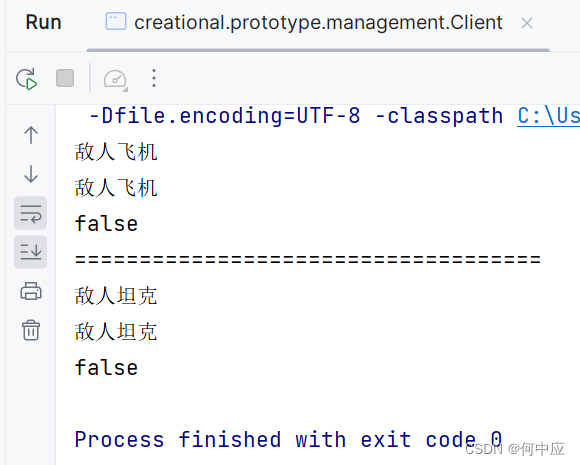
【设计模式-2.3】创建型——原型模式
说明:本文介绍设计模式中,创建型中的原型模式; 飞机大战 创建型设计模式关注于对象的创建,原型模式也不例外。如简单工厂和工厂模式中提到过的飞机大战这个例子,游戏中飞机、坦克对象会创建许许多多的实例࿰…...
)
八大插入算法(有注释)
直接插入排序 //直接插入排序 void InsertSortingDirectly(int* nums,int numsSize){int j0;for(int i1;i<numsSize-1;i){//定义一个中间变量保存当前要插入的值int tempnums[i];//在前面已排好序的序列中,找到合适的位置插入for(ji-1;j>0;j--){if(nums[j]&g…...

【2】基于多设计模式下的同步异步日志系统
6. 相关技术知识补充 6.1 不定参函数 在初学C语⾔的时候,我们都⽤过printf函数进⾏打印。其中printf函数就是⼀个不定参函数,在函数内部可以根据格式化字符串中格式化字符分别获取不同的参数进⾏数据的格式化。 ⽽这种不定参函数在实际的使⽤中也⾮常…...

npm管理发布包-创建与发布
创建与发布 我们可以将自己开发的工具包发布到 npm 服务上,方便自己和其他开发者使用,操作步骤如下 创建文件夹,并创建文件indexjs,在文件中声明函数,使用 module.exports 暴露npm初始化工具包,package.j…...

基于Spring,SpringMVC,MyBatis的校园二手交易网站
文章目录 项目介绍主要功能截图:部分代码展示设计总结项目获取方式🍅 作者主页:超级无敌暴龙战士塔塔开 🍅 简介:Java领域优质创作者🏆、 简历模板、学习资料、面试题库【关注我,都给你】 🍅文末获取源码联系🍅 项目介绍 基于Spring,SpringMVC,MyBatis的校园二…...

酒店 KPI绩效考核指标及应用
“路遥知马力,日久见人心”,目前国内各类型酒店风起云涌,大有在市场竞争中一比高下之势,各路精英受经济型酒店低投入高回报的市场利益驱动,都分分抢占市场,从而使国内经济型酒店的数量不断增加,…...

WordPress两种方法实现上传媒体图片文件自动重命名
我们发布文章时,会上传一些图片、音频之类的文件。但是WordPress没有自动 给新上传文件重命名的功能,逐个文件去重命名那就太麻烦了,那么我们改如何自动给上传的媒体文件图片重命名呢? 我在网站搜索了些上WordPress上传媒体文件自…...
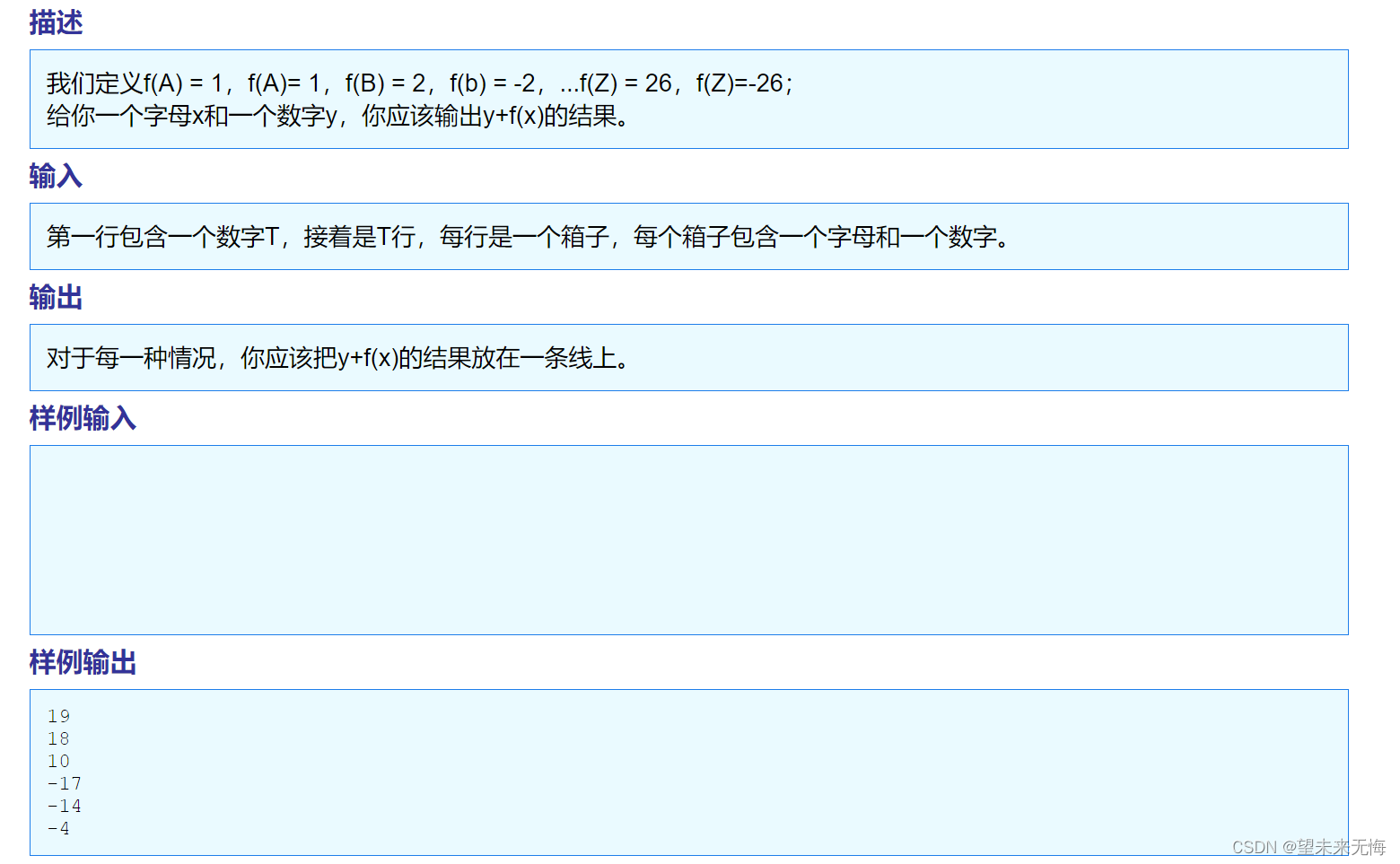
TZOJ 1405 An easy problem
翻译有些出错,但大概是那个意思 答案: #include <stdio.h> #include <ctype.h> //引用库函数isupper的头文件int main() {int T 0, i 0;scanf("%d", &T); //要输入的行数while (T--) //循环T次{char c;int y 0…...

SpringBoot+mysql+vue实现大学生健康档案管理系统前后端分离
一、项目简介 本项目是一套基于SpringBoot实现大学生健康档案管理系统,主要针对计算机相关专业的正在做bishe的学生和需要项目实战练习的Java学习者。 包含:项目源码、数据库脚本等,该项目可以直接作为bishe使用。 项目都经过严格调试&#…...
——UWB MAC时间网格同步及Hopping)
CCC联盟数字车钥匙(三)——UWB MAC时间网格同步及Hopping
本文继续上一篇UWB MAC时间网格继续介绍UWB MAC中关于时间同步相关内容。 3、MAC时间网格同步 每个测距会话的定义都基于相对的指定时钟参考 U W B t i m e 0 k UWB^k_{time0} UWBtime0k,相对于发起者的内部时钟定义。 时钟参考 U W B t i m e 0 k UWB^k_{time0} …...

一周上手 steam搬砖项目或成2024年最受欢迎副业
蒸汽砖拆除项目,兼职创业两不误,助你轻松赚钱 你是否想要找到一个既可以兼职又可以创业的项目?蒸汽砖拆除项目正逐渐崭露头角,引起了越来越多人的关注。这个项目不仅门槛低,上手快,而且不用担心卖不出去&am…...

java数据结构(哈希表—HashMap)含LeetCode例题讲解
目录 1、HashMap的基本方法 1.1、基础方法(增删改查) 1.2、其他方法 2、HashMap的相关例题 2.1、题目介绍 2.2、解题 2.2.1、解题思路 2.2.2、解题图解 2.3、解题代码 1、HashMap的基本方法 HashMap 是一个散列表,它存储的内容是键…...

快速了解ChatGPT(大语言模型)
目录 GPT原理:文字接龙,输入一个字,后面会接最有可能出现的文字。 GPT4 学会提问:发挥语言模型的最大能力 参考李宏毅老师的课快速了解大语言模型做的笔记: Lee老师幽默的开场: GPT:chat Ge…...
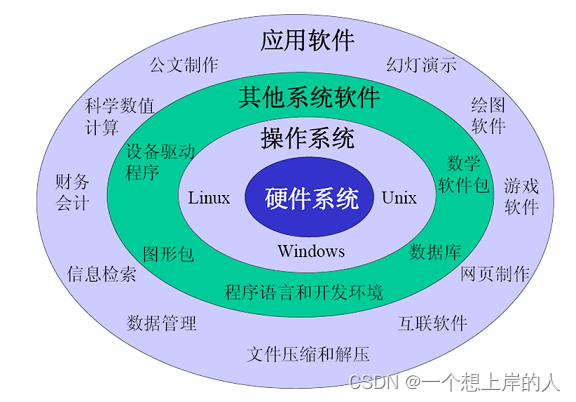
计算机软件的分类
以功能进行分类,计算机软件通常可以分为系统软件和应用软件两大类。 系统软件:系统软件是计算机运行和管理的基本软件,包括操作系统、驱动程序、系统工具和服务程序等。操作系统是系统软件的核心,负责管理计算机的硬件资源、提供用…...

数据库应用:Ubuntu 20.04 安装MongoDB
目录 一、理论 1.MongoDB 二、实验 1.Ubuntu 20.04 安装MongoDB 三、问题 1.Ubuntu Linux的apt 包管理器更新安装软件报错 2.Ubuntu20.04安装vim报错 3.Ubuntu20.04如何更换阿里源 4.Ubuntu22.04如何更换阿里源 一、理论 1.MongoDB (1)概念 …...

服务器配置 jupyter lab,并在本地浏览器免密登陆
一、背景 快速搭建一个jupyter lab 不用每次用ssh登录输入密码 二、步骤 方法1、临时在服务器启动 jupyter lab,并在本地浏览器免密登陆 两句命令解决 pip install jupyterlabnohup jupyter lab --ServerApp.ip"*" --ServerApp.password"" -…...

WebUI自动化学习(Selenium+Python+Pytest框架)002
新建项目 New Project 新建一个python代码文件 file-new-python file 会自动创建一个.py后缀的代码文件 注意:命名规则,包含字母、数字、下划线,不能以数字开头,不能跟python关键字或包名重复。 ********************华丽分割线********************…...

miot-plugin-sdk. npm install安装失败
miot-plugin-sdk-npm install安装失败 最紧公司要开发一台智能设备,经过同事的对比,选中了米家作为云平台,于是,我就负责开发app界面端,根据官方文档教程 下载了miot-plugin-sdk 程序,准备开始开发,结果悲…...

【网络】每天掌握一个Linux命令 - iftop
在Linux系统中,iftop是网络管理的得力助手,能实时监控网络流量、连接情况等,帮助排查网络异常。接下来从多方面详细介绍它。 目录 【网络】每天掌握一个Linux命令 - iftop工具概述安装方式核心功能基础用法进阶操作实战案例面试题场景生产场景…...

Vue记事本应用实现教程
文章目录 1. 项目介绍2. 开发环境准备3. 设计应用界面4. 创建Vue实例和数据模型5. 实现记事本功能5.1 添加新记事项5.2 删除记事项5.3 清空所有记事 6. 添加样式7. 功能扩展:显示创建时间8. 功能扩展:记事项搜索9. 完整代码10. Vue知识点解析10.1 数据绑…...

STM32+rt-thread判断是否联网
一、根据NETDEV_FLAG_INTERNET_UP位判断 static bool is_conncected(void) {struct netdev *dev RT_NULL;dev netdev_get_first_by_flags(NETDEV_FLAG_INTERNET_UP);if (dev RT_NULL){printf("wait netdev internet up...");return false;}else{printf("loc…...
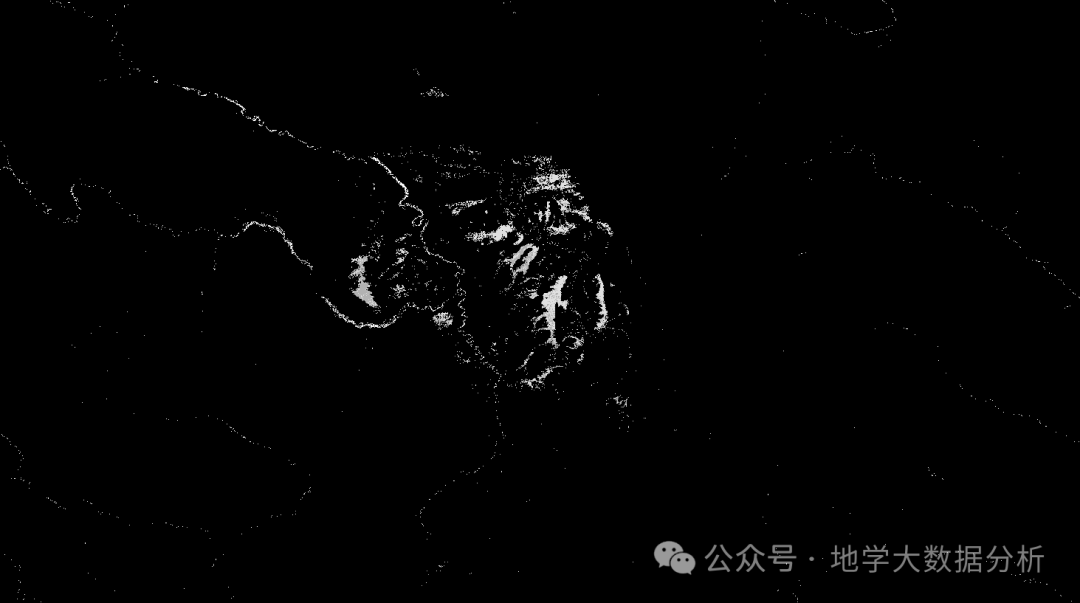
全球首个30米分辨率湿地数据集(2000—2022)
数据简介 今天我们分享的数据是全球30米分辨率湿地数据集,包含8种湿地亚类,该数据以0.5X0.5的瓦片存储,我们整理了所有属于中国的瓦片名称与其对应省份,方便大家研究使用。 该数据集作为全球首个30米分辨率、覆盖2000–2022年时间…...

Rust 异步编程
Rust 异步编程 引言 Rust 是一种系统编程语言,以其高性能、安全性以及零成本抽象而著称。在多核处理器成为主流的今天,异步编程成为了一种提高应用性能、优化资源利用的有效手段。本文将深入探讨 Rust 异步编程的核心概念、常用库以及最佳实践。 异步编程基础 什么是异步…...
中的KV缓存压缩与动态稀疏注意力机制设计)
大语言模型(LLM)中的KV缓存压缩与动态稀疏注意力机制设计
随着大语言模型(LLM)参数规模的增长,推理阶段的内存占用和计算复杂度成为核心挑战。传统注意力机制的计算复杂度随序列长度呈二次方增长,而KV缓存的内存消耗可能高达数十GB(例如Llama2-7B处理100K token时需50GB内存&a…...

搭建DNS域名解析服务器(正向解析资源文件)
正向解析资源文件 1)准备工作 服务端及客户端都关闭安全软件 [rootlocalhost ~]# systemctl stop firewalld [rootlocalhost ~]# setenforce 0 2)服务端安装软件:bind 1.配置yum源 [rootlocalhost ~]# cat /etc/yum.repos.d/base.repo [Base…...
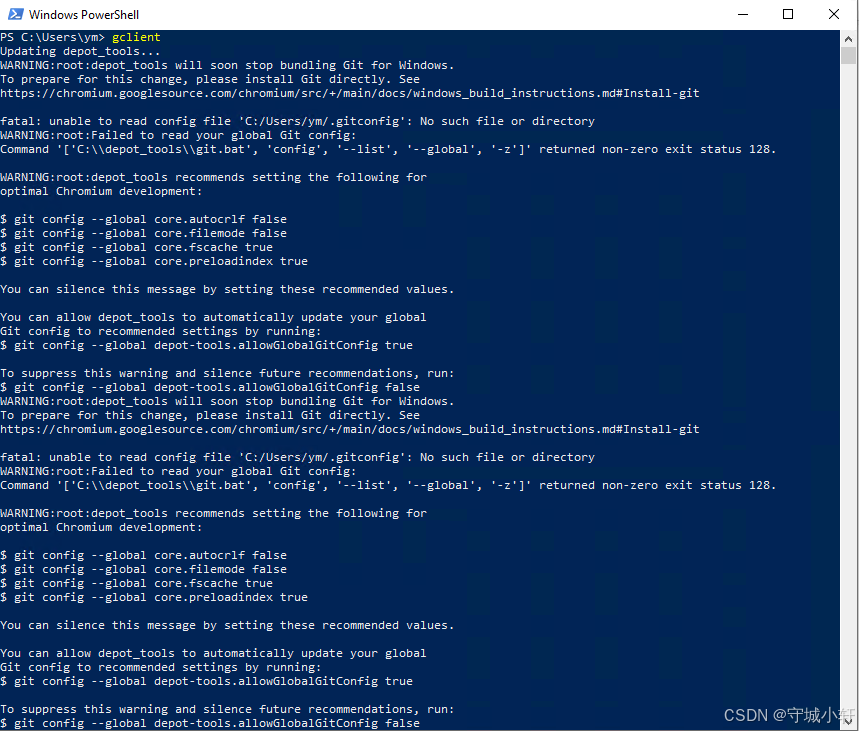
Chromium 136 编译指南 Windows篇:depot_tools 配置与源码获取(二)
引言 工欲善其事,必先利其器。在完成了 Visual Studio 2022 和 Windows SDK 的安装后,我们即将接触到 Chromium 开发生态中最核心的工具——depot_tools。这个由 Google 精心打造的工具集,就像是连接开发者与 Chromium 庞大代码库的智能桥梁…...

淘宝扭蛋机小程序系统开发:打造互动性强的购物平台
淘宝扭蛋机小程序系统的开发,旨在打造一个互动性强的购物平台,让用户在购物的同时,能够享受到更多的乐趣和惊喜。 淘宝扭蛋机小程序系统拥有丰富的互动功能。用户可以通过虚拟摇杆操作扭蛋机,实现旋转、抽拉等动作,增…...

django blank 与 null的区别
1.blank blank控制表单验证时是否允许字段为空 2.null null控制数据库层面是否为空 但是,要注意以下几点: Django的表单验证与null无关:null参数控制的是数据库层面字段是否可以为NULL,而blank参数控制的是Django表单验证时字…...
